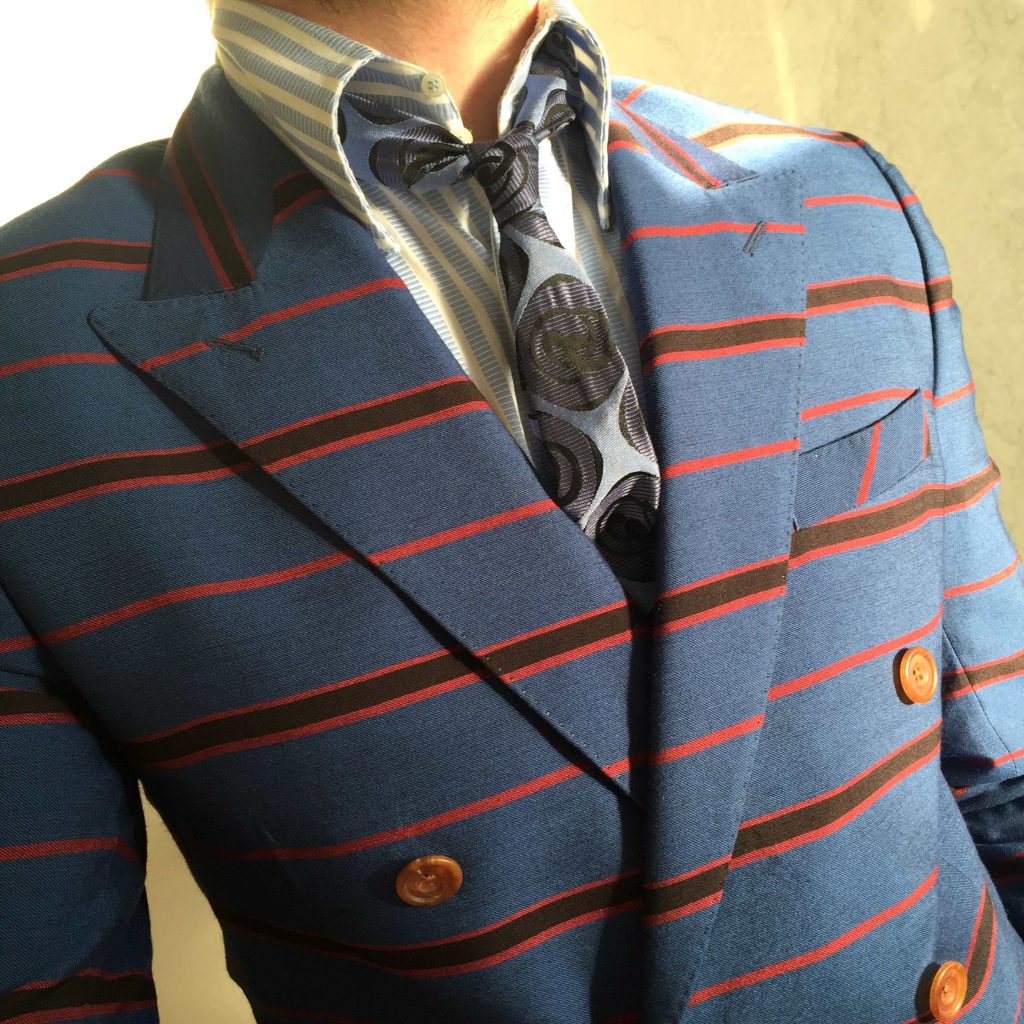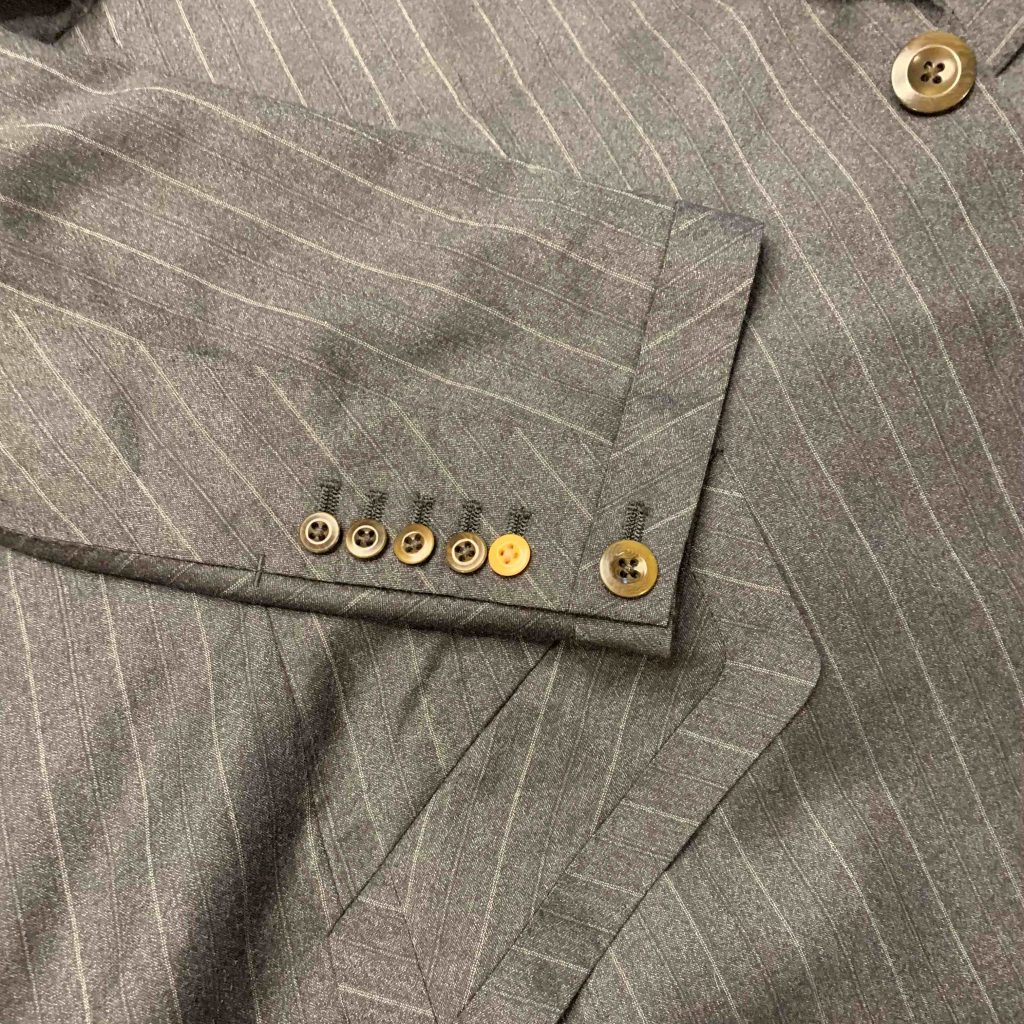Ethnographic Wearing
Author: Joshua M. Bluteau, UK, Coventry University, Social Anthropologist, @anthrodandy
Aim of study
This method was developed as part of a broader research project catalogued in the book ‘Dressing Up’ (Bluteau, 2022). During this period, I conducted ethnographic fieldwork with bespoke tailors in London and the network of Instagram sartorialists that grew up around them. As part of this process, I developed a digital ethnographic method termed ‘immersive cohabitation’ (Bluteau, 2021) that centred around doing as my digital interlocutors did, dressing up, taking selfies and posting them to Instagram as part of a reciprocal social and sartorial practice. To take part in this I had to acquire similar garments to wear and photograph, which were mostly purchased from online auction websites and grew into a considerable collection.

These garments were not merely ethnographic artefacts but became part of my everyday wardrobe as I sought to foreground participation, over observation (following Wacquant, 2004) as part of my research praxis. ‘Ethnographic Wearing’, as part of this broader study became a way of engaging with the acquired garments themselves and using the wearing of them as a research process to learn more about them.
The objective of the study
To answer what it is like to wear certain clothes. Incorporating both the process of acquiring, storing, and living with them to gain insight into the lived experience of their owner/wearer, and to understand what impact these garments had on them.
The method
Simply, this method began by purchasing garments akin to those that my interlocutors were wearing and then using them to dress myself to take self-portrait style images which were uploaded to Instagram to construct a digital self that could be used for digital ethnographic research. However, this metamorphosed into an everyday practice of wearing these garments as they became part of how I dressed habitually on and offline during this period of fieldwork.

As a result I began to reflect on the process of wearing, taking thickly descriptive fieldnotes and digital photographs to catalogue the sensorial, haptic, emotional and phenomenological aspects of wearing these clothes. This in itself became a kind of thick wearing and became central to my ethnographic engagement with garments as an object of anthropological study.
Then what?
After the study, the wardrobe remained. The fieldwork which allowed the inception of this method of Wearing Ethnography was over, but the wardrobe remained dynamic. The doors to this personal collection were not closed although some rails became less visited – gathering dust – while others had new garments added to them and were still frequently worn. In this sense, the study is still ongoing and this longitudinal engagement with Wearing Ethnography promises to generate further research data for future analysis.
How this specific method could be used by others
This method is not bound by geographical location, garment type or research focus and can be either the primary mode of study or a supplementary line on enquiry. As such it has the potential to be utilized by a large number of researchers both in the field of fashion/garment studies, as well as a wide range of qualitative researchers in the social sciences and beyond. It may be of interest to those who wish to investigate garments in isolation, or those who wish to engage with garments that have a specific bearing on their research site. It also offers a starting point for discussions about collecting garments from the field and wearing not only to reflect on the process but as a mode of access to and rapport building with new informants. The primary limitation is whether garments fit or not, which may present a substantial barrier in some cases.
How the results could be used by others
The results of this study form part of an emerging subdiscipline of anthropology which could be termed fashion anthropology or the anthropology of clothing and adornment. Specific anthropological investigations of clothing are disparate and fragmented, with much of the prior scholarship collated by Luvaas and Eicher (2019) in their fantastic reader. However, methodological tools for engaging with specific garments are less well defined, with research often focusing on the relationship between informant and garment (see for example, Miller and Woodward, 2012) rather than the garment and researcher. As a result, this method of ‘ethnographic wearing’ challenges the current narrative, and offers a way for researchers to engage with clothing that can provide rich ethnographic data.

What insight does this method generate?
Whilst a range of methods have been used by other scholars to engage with garments held in collections, this method offers the researcher the opportunity to wear the garments in and out of the wardrobe. This allows considerable insight into how the garments feels on the body, how it moves and shapes the experience of the wearer and how differing notions of expense and quality can be tactilely experienced. This method joins artefact to researcher slipping one inside the other like two jigsaw pieces to give a bigger picture. These insights can be small from how a particular maker cuts a garment through to practical considerations of movement, temperature control, and how a garment performs in different environments, as well as how the garment shapes other’s perception of the wearer. All the qualitative insights can help to produce a more holistic and rigorous depiction of the garment.
References
Bluteau, J.M. (2021). Legitimising digital anthropology through immersive cohabitation: Becoming an observing participant in a blended digital landscape. Ethnography 22(2): 267-285.
Bluteau, J.M. (2022). Dressing Up: Menswear in the age of Social Media. New York: Berghahn.
Luvaas, B., and Eicher, J.B. (2019). The Anthropology of Dress and Fashion: A Reader. London: Bloomsbury.
Miller, D., and Woodward, S. (2012) Blue Jeans: The Art of the Ordinary. Berkeley: University of California Press.
Wacquant, L. (2004). Body and Soul: Notebooks of an Apprentice Boxer. Oxford: Oxford University Press.